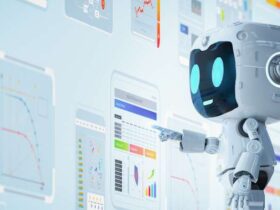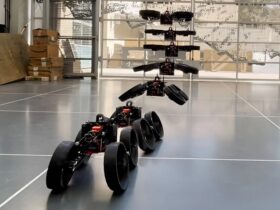In the fight against climate change, humanity finds itself at a critical crossroads. The planet is warming, glaciers are melting, and extreme weather events are becoming the new normal. With every passing year, the urgency to combat this global crisis intensifies. But what if the key to saving our planet lies not in politics, but in the silicon circuits of Artificial Intelligence (AI)? Can technology, the very invention that has driven our industrial revolutions, now be our savior?
AI: The Planet’s New Superhero?
Imagine a world where AI-powered systems can predict climate disasters before they happen, optimize energy use in real-time, and even suck carbon out of the atmosphere. This isn’t science fiction—it’s happening right now. AI is rapidly emerging as a powerful tool in the battle against climate change, with applications that span across multiple sectors.
1. Optimizing Energy Use: The Invisible Hand of Efficiency
Energy consumption is one of the largest contributors to greenhouse gas emissions. AI is stepping in to make our energy use smarter and more efficient. For example, AI algorithms are now being used to optimize the operation of wind farms, ensuring that turbines are operating at peak efficiency based on real-time weather conditions. In smart cities, AI helps manage electricity grids, balancing supply and demand more effectively than humans ever could. The result? Less energy wasted, lower emissions, and a smaller carbon footprint.
But the real kicker? AI doesn’t just optimize—it learns. These systems get smarter over time, continuously improving their efficiency. It’s like having a thermostat that not only adjusts your home’s temperature but also predicts the weather, understands your habits, and ensures you’re using energy in the most efficient way possible. The potential impact on global emissions is staggering.
2. Predicting Environmental Changes: Seeing the Future Today
AI’s predictive power is another game-changer in the fight against climate change. Machine learning models are now capable of analyzing vast amounts of environmental data to predict changes in climate patterns, sea levels, and even the occurrence of natural disasters like hurricanes and wildfires. This allows governments, NGOs, and communities to prepare and respond more effectively, potentially saving countless lives and mitigating damage.
For example, Google’s AI division, DeepMind, has developed algorithms that can predict the energy output of wind farms 36 hours in advance. This level of foresight enables better planning and integration of renewable energy into the grid, reducing reliance on fossil fuels.
And it’s not just about energy. AI is also being used to track deforestation, monitor biodiversity, and even model the impacts of various climate policies. By providing a clearer picture of the future, AI is helping humanity make more informed decisions today.
3. Carbon Capture and Beyond: Cleaning Up Our Mess
One of the most intriguing applications of AI is in the realm of carbon capture and storage (CCS). AI algorithms are being used to design more efficient systems for capturing carbon dioxide emissions from power plants and other industrial sources. In some cases, AI is even helping to develop new materials that can absorb CO2 from the air, effectively scrubbing our atmosphere of the very gases driving climate change.
But here’s where things get a bit controversial: Can AI actually reverse the damage we’ve done? Some experts believe that with the right advances, AI could help us achieve “negative emissions,” where we’re removing more CO2 from the atmosphere than we’re putting in. It sounds like a dream, but with AI’s rapid advancement, it might just become reality.
The Big Question: Is AI Enough?
As promising as AI is, it’s important to remember that technology alone cannot solve the climate crisis. AI can optimize energy use, predict environmental changes, and even capture carbon, but it can’t change human behavior. The root cause of climate change is our unsustainable lifestyle—our reliance on fossil fuels, our deforestation of the world’s lungs, our rampant consumerism.
AI is a tool, a powerful one, but it’s not a magic bullet. It can guide us, warn us, and help us manage the crisis more effectively. However, without a global commitment to reducing emissions, protecting our natural resources, and transitioning to sustainable practices, AI’s impact will be limited.
Conclusion: A Wake-Up Call
The potential of AI in combating climate change is nothing short of revolutionary. It offers a glimmer of hope in what often feels like an overwhelming battle. But let’s be clear: AI can’t save the planet on its own. It’s a tool that we must wield wisely, in concert with broader systemic changes and a collective shift in our global priorities.
In the end, the question is not just whether AI can save the planet, but whether we are willing to do what it takes to make that a reality. Are we ready to embrace the changes needed to avert disaster, or will we continue to gamble with the only home we have? The choice is ours, but the clock is ticking. And AI? It’s ready when we are.












